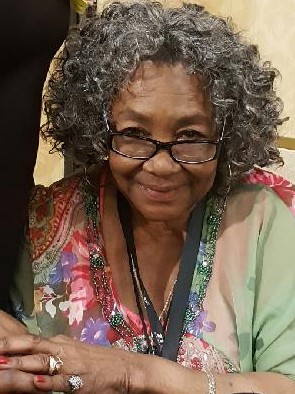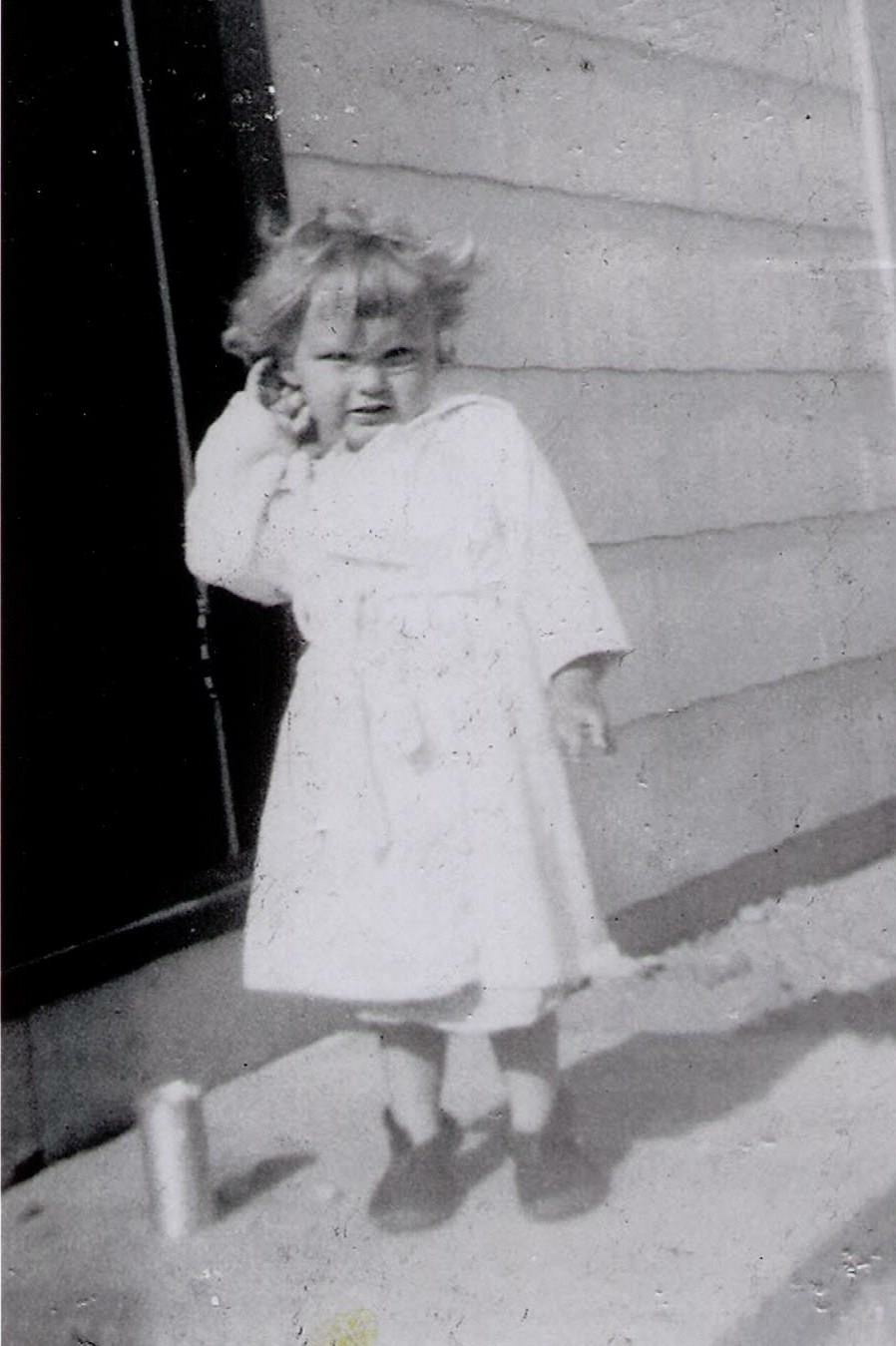Tag: Writing
The Story Behind the Twirling Tassels: 7 Life Lessons from Lottie the Body

They called her the Gypsy Rose Lee of Detroit, yet exotic dancer Lottie the Body was world famous. Performing during the heydays of burlesque in the 1940s, ‘50s, and ‘60s, she traveled the globe and became a sort of clandestine celebrity. Some people may not have wanted to admit they knew who she was, her being so risqué and all, but they knew. Ask any eighty-five-year-old man if he ever heard of her. If he says “no,” he’s probably lyin’.
Lottie died at age 89 in 2020. She always said that today’s strippers have it all wrong with their “look-at-what-I’ve-got-that-you-can-have” attitude. She insisted it should be “look at what I’ve got that you can’t have,” saying that’s what made it striptease.
“Be a lady. Be classy. Be naughty but never nasty. That’s what made me famous.”
Indeed. Old photos reveal a drop-dead gorgeous African American performer with class galore. It was a combination of looks, talent, and personality that made Lottie a decades-long success on stage. Her costumes were elaborate until she’d peel down to one that was conservative by today’s standards, more than many women wear to the beach these days. She’d start in an elegant gown, take it off to something akin to a sparkly mid-century bathing suit, and maybe, if she felt like it, strip off her top to reveal sequined pasties. The epitome of the act was when she’d twirl the tassels on her pasties, leaving her audience breathless with delight. She was a fabulous dancer and was very athletic, which added to the energy of her show. Audiences – men and women – came to the clubs where she performed to be entertained with a class act, and Lottie did not disappoint.
But there was another thing that made Lottie a truly classy lady: She was a genuinely nice person. I first met her at the Golden Horseshoe “house of burlesque” in Harbor Springs, Michigan, in 1971. I was a lowly twenty-one-year-old college kid waitress, and she was the famous forty-year-old star of the show. I watched the same people – wealthy summer residents, yachters, servicemen, locals, music lovers – come back night after night. Sometimes she’d shimmy her fringed costume, dance like a devilish angel, and merely drop a shoulder strap before exiting the stage.
Oh yeah, they came back. They wanted to see those twirling tassels they’d heard about.
Lottie wasn’t like some of the other performers. She was friendly and chatty with the staff. Even me. She quickly figured out that I was in way over my head in that type of environment – I had to work and that was the only job I could find – and took me under her protective wing. I learned a lot that summer.
She’d worked alongside all kinds of famous people: Sammy Davis, Jr.; B.B. King; Aretha Franklin; T-Bone Walker; Della Reese; Louie Armstrong; the Four Tops; Fats Waller; Sarah Vaughn; Redd Foxx; Cab Calloway; Jackie Wilson; Dinah Washington; and so many more she couldn’t recall all of them. She served as emcee at early Harlem Globetrotters games and was married to Goose Tatum, one of the early players. Before Cuba became a Communist country, she met Fidel Castro and thought him a “sweet little man.” The Philippines’ first lady Imelda Marcos took her shoe shopping. She met civil rights activist W.E.B. DuBois while she performed at the historic recreation community for black people, Idlewild, Michigan. She was best friends with Christine Jorgenson, the first famous transgender American entertainer. Lottie performed all over the U.S., with Alaska being one of her favorite states; throughout the Caribbean; in the Pacific; around Europe; and in northern Africa. All of this and she would help me, a clueless college kid, clean tables at the end of my shift so we could go out to breakfast.
I felt humbled, honored, and happy that such a star would care about somebody like me and treat me as if I were her own daughter. Eventually, she told me to call her Mama Lottie, the nickname she used with her loved ones, and she called me her Baby Boo.
My Mama Lottie, former exotic dancer Lottie the Body, the 2017 Living Legend of the Burlesque Hall of Fame in Las Vegas, was so much more than a body. She embodied the heart and soul of a real woman. We could all, women and men alike, use more Lottie in us. In fact, a lot of Lottie.
So what did I learn from Lottie, the woman who was a second mama to me and a beautiful body to much of the world?
- First of all, not to be ashamed of my body. Although hers was perfection, Lottie always celebrated everybody just the way they were. There was no “I’m the drop-dead gorgeous diva for you to admire;” rather, it was “We’ve all got bodies, so let’s appreciate them.” Everybody felt comfortable around her.
- Secondly, I learned that not all strippers are divas, desperate, or depraved. A few were, but most were not. Certainly not Lottie. I never saw her so much as flirt with a customer. She was a professional who was friendly toward everyone. It seemed as if she was conducting her own kind of civil rights movement that invited everyone to come into her world. Gender, age, race, ethnicity, sexual orientation, religion, abilities, education level, financial status – none of that mattered. What mattered was spending good time together.
- Thirdly, Lottie taught me that dance is an expression of life. She reveled in getting everyone up off their bums to dance. Our favorite night was Thursday, maid and butler night, when the African Americans who worked for wealthy white people at their summer estates in that resort town had the night off. The place was electric! Nobody sat. She’d pull people up on stage; she’d encourage the audience to dance around their dinner tables; she’d jump off the stage and dance in the middle of the crowd. And those were the best tip nights for me, because as maids and butlers they knew the value of hard work. I was usually one of only a few white people in the room on those nights, yet I felt totally included and respected. It was magical, the most fun I’d ever had. And, yes, I eventually overcame my insecurity and shyness and occasionally got up on stage to dance.
- My fourth Lottie lesson was that women should live their lives as they please, not as society or their mother or schooling or a man or the media tells them they should. Well aware there were people who shunned her because of her race as well as her chosen profession – she endured some horrendously bigoted situations in all those years – she focused instead on those who accepted her. She’d experienced many more marvelous times and more good people than frightening times with ignorant cusses, as we called them. We often talked about how more women could benefit from knowing how to find and focus on the good people in this world.
- My fifth lesson from Lottie was that if two people love each other their sex life should be robust. She was married and adored her husband. She didn’t reveal any juicy bedroom secrets to a kid like me, even after many years of friendship, but there was no doubt she enjoyed connubial bliss. Occasionally, she reminded me to do the same, saying a couple’s spat or disagreement should never get in the way of that. And she did have some spicy stories to tell about her younger single days, some very sexy and some quite hilarious. Let’s just say she was not shy.
- The sixth lesson is more general. Enjoy living. Work hard. Laugh a lot. Treasure your friends and family. Eat what you want. Invite new people into your life. Don’t pass up s’mores over a campfire on the beach in the middle of the night. Tell ghost stories. Believe in ghosts and God. And most, of all, treat yourself with respect.
- The final, seventh lesson came in 2019 when I went to Detroit to visit with her after not seeing her in person for several years. We talked on the phone weekly and wrote letters back and forth because she loved letter-writing, but she didn’t travel anymore and I hadn’t been up there in quite a while. Although at age 88 she’d had some health problems, I discovered the same beautiful woman with sparkly brown eyes, velvety skin, and an exuberant personality that I had known for almost half a century. I saw that goodness doesn’t age and kindness never dies.
She once wrote, “Lottie the Body may have brought me fame, but Lottie the Woman has always cared most about one thing: sharing whatever gifts I have to make people happy…. I pray that you may have the same kind of love and happiness that I enjoy. I send my love and God’s blessings to you all.”
In her honor, let’s get up and do a little dance today. And every day after. Let’s celebrate life the way Lottie did – with joy and, most of all, with love.
Postscript: Lottie inspired me to use her stories to write a fictional trilogy, The Burly-Q Girls. It was such an honor to do so. The first book, The Burly-Q Girls: the 6, is now available on Amazon. The others will come out in the spring, The Burly-Q Girls: 6 Dicks, and next autumn, The Burly-Q Girls: 6’ Under, 2022. You can get your copies on Amazon in Kindle, paperback, or large print.
If you want to look her up, simply search for Lottie the Body and you’ll find her. There has never been another like her.
Secrets of the Island

 Mackinac Island is one of my favorite places on earth. I’ve worked in 13 countries and traveled to a couple dozen more, many spectacular; but, still, that speck in Lake Huron in Michigan, U.S.A., remains one of my favorite places to visit. A native Michigander, I’ve been going there since I was a kid.
Mackinac Island is one of my favorite places on earth. I’ve worked in 13 countries and traveled to a couple dozen more, many spectacular; but, still, that speck in Lake Huron in Michigan, U.S.A., remains one of my favorite places to visit. A native Michigander, I’ve been going there since I was a kid.
The only way to get there is by ferry. No motorized vehicles are allowed on the island, except emergency vehicles. Therefore, if you want to get around you walk, ride a bike, ride a horse, or hire a carriage. It’s like stepping back a hundred and fifty years in time.
 The small Victorian-era village is charming as all get-out. American flags dot the landscape. There are many Queen Anne, Gothic, Revival, Shingle, and other styles of “cottages,” which range in size from small to huge. Quaint inns, B&Bs, churches, and shops abound. The Grand Hotel, with the longest veranda in the country, is king of the hill. With its panoramic views of Lakes Huron and Michigan, it attracts visitors from around the globe.
The small Victorian-era village is charming as all get-out. American flags dot the landscape. There are many Queen Anne, Gothic, Revival, Shingle, and other styles of “cottages,” which range in size from small to huge. Quaint inns, B&Bs, churches, and shops abound. The Grand Hotel, with the longest veranda in the country, is king of the hill. With its panoramic views of Lakes Huron and Michigan, it attracts visitors from around the globe.
The popular 1980 timeslip movie Somewhere in Time, starring Jane Seymour and Christopher Reeve, was filmed at the Grand and still has a large following. If you’re a fan of the movie like I am, every time you step into that hotel you’ll be struck by the emotional story of two lovers from different centuries.
The history of the island is fascinating, as well. Native Americans were there first, of course, with evidence of semi-nomadic people as early as 1000 B.C. Anishnaabek tribes inhabited the area when French fur traders arrived in the 1600s. French missionaries followed, trying to save the souls of the native peoples and the rowdy fur traders. An assortment of scallywags showed up, too. In 1761, after the French and Indian War, the British took over Fort Michilimackinac, which the French had built on the mainland. In 1779 the British and civilians moved the fort to the island. After winning the Revolutionary War, the United States took over the island and the fort in 1796. But in 1812 the British captured the fort.
Rumor has it most of the American soldiers escaped to the mainland, with wives and children left behind at the fort. A few years later, 1815, when the American soldiers finally were able to take back the fort, not all the wives were happy. One or two liked the Brits better than their American husbands.
What all of the means is that the fort was orginally French, then British, then American, then Brithish, then American again. Whew. Think of how that impacted the native peoples.
Finally, that part of North America officially belonged to the U.S.A. and the rest is history. The fort still stands, with reenactments throughout the summer. Well, not of the unhappy wives, but of the soldiers.
 It’s an 8.2-mile journey around the island, an easy bike ride, as it’s mostly flat along the shoreline. You can also ride through the hilly inland part of the island if you’re fit for a hefty trek. There are caves, cemeteries, rock formations, and other things to see along the way. It’s tradition to build a cairn out of rocks on the shorline, so make sure you leave yours behind. A cairn is stacked rocks that tell the world you were there. Weather knocks them down, so you have to come back to build anew.
It’s an 8.2-mile journey around the island, an easy bike ride, as it’s mostly flat along the shoreline. You can also ride through the hilly inland part of the island if you’re fit for a hefty trek. There are caves, cemeteries, rock formations, and other things to see along the way. It’s tradition to build a cairn out of rocks on the shorline, so make sure you leave yours behind. A cairn is stacked rocks that tell the world you were there. Weather knocks them down, so you have to come back to build anew.
A cairn is on the cover of my new romantic suspense novel, Secrets of the Island. You guessed it: the story takes place on Mackinac Island. I’m thrilled to have finally written a book about this fascinating place. It’s 1943 and a Red Cross nurse sequesters herself in her grandfather’s cottage to escape the ravages of what she experienced in the war. However, one family secret after another emerges to remind her that she’s not the only one with secrets to bear.
 Here’s my invitation to you: go to Mackinac Island. Visit the Island Bookstore and get Secrets of the Island. Find a nice seat on a porch facing the lake and have a refreshment at hand as you read. If you can’t go in person, let the book take you away as you slip back in time.
Here’s my invitation to you: go to Mackinac Island. Visit the Island Bookstore and get Secrets of the Island. Find a nice seat on a porch facing the lake and have a refreshment at hand as you read. If you can’t go in person, let the book take you away as you slip back in time.
This story will make you wonder: what secrets are buried in your family tree?
The Three Amigos

I have a handful of best friends. How about you? I think most of us feel close to a few people, not hoards.
Today I want to talk about two of my sister-friends, Myra and Marka. We call ourselves the Three Amigos. We’ve known each other for thirty years and joke that we have to stay friends because we know too much. We don’t want anyone telling our deepest, darkest secrets.
When I first met Myra, we went to lunch one day at a Mexican restaurant. A roach crawled up the wall beside us in the middle of her telling a story. Without breaking stride, she took off her shoe, killed the pest, and went on with her story. I knew she was my kind of woman.
Myra introduced me to Marka, who is ten years younger than the other two of us. Beautiful, stylish, Southern as all get-out, and smart as a whip, I fell in love with her, too, as soon as I met her.
We’re all married, so the husband stories have abounded, as you can well imagine. We love our families but treasure our time together. We meet informally for lunch throughout the year, but it’s tradition to meet before Christmas for a long lunch to exchange small gifts, and then wander through an antique store or two.
It’s this friendship I used as a model for my latest novel, Secrets of the Island. A romantic suspense story, the “Three Musketeers” band together to solve a family mystery. When they solve one, another crops up, so they keep going. It takes place during World War II, so wartime issues intertwine with their lives.
As I wrote, I would think of Myra’s effervescent take on life and Marka’s way of turning a phrase. My characters took on their personalities, with someone a lot like me in the middle orchestrating the solving of the mystery.
I think this is what we as writers do. We don’t disclose our friends’ secrets, but we automatically use who and what we know to write. As I wrote about the Three Musketeers, I fell in love with those characters. Do you as a writer fall in love with some of your characters? I hope so. That’s what will make your readers fall in love with them, too.
This writing also made me fall in love with the Three Amigos all over again. Here’s to sister-friends everywhere. May you stay friends forever, holding those secret stories locked away in your heart.
Breaking the Damned Rules

 Every serious writer knows the endless rules to writing a good book. But I’ve always wondered: Who makes up all these rules and why do we slovenly follow them? A lot of them are boring. That’s why I relished writing The House on Haven Island, my first romantic suspense novel, a murder mystery. Rather, an attempted murder. See, I already broke a rule. The murder never actually comes off.
Every serious writer knows the endless rules to writing a good book. But I’ve always wondered: Who makes up all these rules and why do we slovenly follow them? A lot of them are boring. That’s why I relished writing The House on Haven Island, my first romantic suspense novel, a murder mystery. Rather, an attempted murder. See, I already broke a rule. The murder never actually comes off.
Anyway, because I knew I would publish this myself on Kindle and would not, therefore, be beholdin’ to an editor or publisher, I did anything I damn well pleased. What fun!
Here are some of the rules that were so happily broken:
- Every chapter should be about the same length, traditionally 20-25 pages. Phooey. I told a story until it was done, and that was the end of the chapter. No benign filler. Some chapters are twenty pages and some are three. So sue me.
- Don’t end a sentence in a preposition. I did so whenever I wanted to. So there. After all, that’s how we talk. That rule doesn’t make sense anyway. It’s based on Latin rules of grammar and English is a Germanic language. I’m pretty sure my German ancestors don’t care what we use a preposition for.
- Ladies don’t swear. Ha! The truth is, and women know this, females are capable of swearing like sailors on steroids. We just don’t do it in public as often as men. My main character, Lila, is alone on an island with no memory. Do you really think she wouldn’t cuss up a storm? “Oh, my gosh! I’m in such doll-garn trouble. Golly gee whiz, what am I going to do?” Not a chance. Note the title of this blog to solidify my point.
- One pre-reader said Lila talks to the chimpanzees, at first the only other living beings on the island, too much. I consulted with my trusty advisers, my dogs LuLu and Lucky, and my cat Lucy. “Do I talk to animals too much?” I asked. They all agreed: “Of course not!” My conversations with them directed the ones in the book. By the way, I also talk to plants and trees.
- Women don’t seduce men; the man always seduces the woman. If you believe that, you need to get a grip on reality. My protagonist Lila seduces the man of her desire. Believe me, he doesn’t complain.
- People meet and fall in love but don’t consummate their relationship until near the end of the book. That’s no fun. It was a lot more interesting to have the sexy scenes start early on and carry on throughout the book. This book is hot!
- A book has to be traditionally published to be legitimate. Nope. This is a great read.
Because The House on Haven Island isn’t conventional, I know it isn’t for everybody. I also know I have a lot of unconventional readers and friends who will love it. I know I do. I hope you do, too. Join Lila as she gets lost in a seductive tropical world of mystery and love. Get lost in your own dreamy world along the way.
Writers and Wrongers

 Long ago I heard that title – a woman was describing herself as a wannabe writer who was really a wronger – and I loved it. After periodically seeing that phrase and mulling it over for many years, I’ve come to the conclusion that most writers are probably wrongers, too. I know I am. That’s what makes good stories.
Long ago I heard that title – a woman was describing herself as a wannabe writer who was really a wronger – and I loved it. After periodically seeing that phrase and mulling it over for many years, I’ve come to the conclusion that most writers are probably wrongers, too. I know I am. That’s what makes good stories.
I’ve done a lot wrong in my life. An early college career that had no meaning to me. Giving up on my own hopes and dreams in order to please others. Occasionally falling into the despair of depression. An unhealthy second marriage that resulted in devastation. Being next to homeless except for the generosity of my sister. Assuming someone somewhere would take care of things and it wouldn’t have to be me.
Wow. That’s all great stuff for writing. Ernest Hemingway said, “There is nothing to writing. All you do is sit down at a typewriter and bleed.” That’s what we as writers do. Rather than hiding our most embarrassing, dumb, and inexplicable life decisions, we open ourselves up and let them spill out all over the place. In the process, we figure out what was going on in our minds and what we can do to learn from it. We do this by putting bits of ourselves into each character we write. And by writing characters who are the people we aspire to be.
The reader, of course, never has to know. For example, a villainess in one of my stories, the bitch no one can stand, took a letter that had come in the mail for her friend and steamed it open to see if it was from a guy she herself had a crush on. When it turned out to be from the friend’s dad, she carefully glued it shut and put it back in her friend’s stack of mail. Now I’m not confessing that I ever did such a wretched thing; I’m just sayin’ I got the idea somewhere.
Writers get ideas everywhere. Every time something goes wrong in my life I catch myself saying, “Oh! That would be a good story.” Good stories, after all, are about overcoming life’s obstacles. They are about prevailing. They are about finding an inner strength you never knew was there. They are about discovery!
Although I couldn’t write about it until years later, some of my erratic behavior after the death of my first husband at age thirty-three is revealed in my novel Homecoming Queen. My thankfully short-lived, wacky second marriage can be found in soon-to-be-published Home Body. A trip my sister and I took when we were in our early twenties, where we camped from Michigan to California and back because we wanted to see the Pacific Ocean, is hilarious in Tough Rocks. Although we’d call home and lie through our teeth, telling our parents that everything was “fine,” in truth we ran into a hail storm that demolished the hood of our car; a flash flood that holed us up in Boulder, Nevada, for three days with nothing to do but watch the free movie of how the Hoover Dam was made; a dust devil that destroyed our tent; and melted tires when we drove through the Mohave Desert at noon on the hottest day in July. It’s that kind of adventure that makes for good writing, if you just let it roll rather than refusing to admit you were ever that stupid.
Writer Sylvia Plath said, “And by the way, everything in life is writable about if you have the outgoing guts to do it, and the imagination to improvise. The worst enemy to creativity is self-doubt.”
So if you’re a writer or want to be a writer, go ahead and have the guts to spill out your life stories. Take your wrongs and let them write.
Examples and comments are welcome.
Image found on ruffledblog.com
The Story of a Storyteller

 Everybody has a story. What’s yours?
Everybody has a story. What’s yours?
I’ve loved telling stories ever since I was a little kid. It was an inherited skill. As Linda Ellerbee once said, “My family believes that telling one story when two will do is a sign that someone isn’t really trying.” With my Irish and Scots-Irish heritage the legacy of seanchi tales seemed to be imbedded in the marrow of our bones. My parents and their twelve siblings rivaled each other in telling tall tales. I heard about my own birth so much I was stunned to eventually learn that my mother had been in labor for only nine hours. I thought she’d broken the world record for prolonged birthing agony.
Truth is many of us baby boomers grew up with stories being bantered about over the dinner table, long before we had outside entertainment drowning out our own voices. A favorite for us kids was Aunt Jane’s rendition of her neighbor Jeb’s “unfortunate” run-in with the police on the night he forgot to put on his pants before running out to the gas station for a tin of snuff. He’d been schnockered, of course. We’d titter and roll our eyes every time we heard it, embarrassed at hearing about a man’s bare ass at the same time it filled us with naïve glee. I loved writing up that one when I was a fledging writer!
So with my childhood love of writing, and my twelfth-grade teacher and college English professor both telling me to never stop writing, it might seem a conundrum that I chose to get degrees in sociology, counseling, and education. Why did I quit writing?
Why did any of us women in the ‘60s and ‘70s choose our careers? We didn’t see a lot of options. Nurse. Teacher. Stewardess if we were really outrageous. New career paths were opening up but for too many of us they had no connection to our everyday lives. I couldn’t figure out how to make a living by writing.
Was there something you loved to do that got lost for you, too? It could be anything that completes your life story: writing, poetry, painting, swimming, business, orienteering, baking, sculpting, joking, singing, performing, architecture, tatting….
If so, here’s the exciting part: Now is our time. Now is the right time to rediscover your hopes and dreams. I’ve rediscovered my desire – indeed need – to write. Now is the time of my life when I can draft words into stories without worrying about what others will think because I don’t give a rat’s ass what they think.
It doesn’t matter how old you are, young or old, wise or wising up, this is the right time for you, too. No more waiting. No more cogitating. Now.
Is there something that you once loved doing that you want to revive?
Go ahead. Find your story and live it out.
Make it worth retelling!